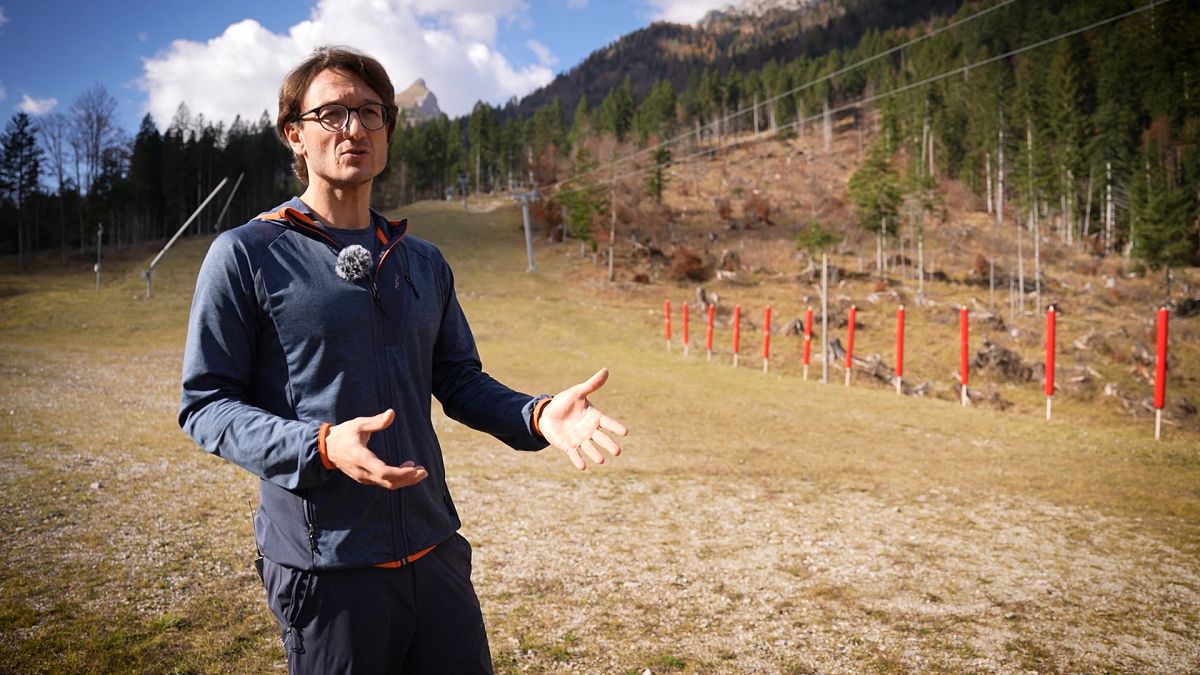BeyondSnow is working with ten pilot sites threatened by the disappearance of snow, and has three aims: to gather data, list resources and put forward the results to local and even national decision-makers.
BeyondSnow is helping low-altitude ski resorts prepare for the end of ‘white gold’. Year after year, the snow cover is diminishing and the duration of snow cover shortening. To be profitable, a ski resort needs to be open for 100 days. The resorts concerned must therefore adopt a form of resilience, as explains Philipp Corradini, a researcher at EURAC Research, one of the 13 partners in the BeyondSnow project: “The resilience approach we are adopting consists of determining how systems — in our case, tourism and community systems — absorb or adapt to the effects of climate change. And this is also linked to their overall vulnerability. Exposure to climate change is one example. If you have a ski resort or a tourist destination that generates 80% of its revenue in winter from skiing, naturally, its exposure and sensitivity to climate change is different from that of a destination where the main overnight stays are in summer.”
Philipp Corradini explains the three aims of the project, which will run for three years between 2022 and 2025:
“There are in fact three objectives that we have been working on since the start of the project. The first, which we call the resilience adaptation model, is in fact a collection of different indicators that help tourist destinations understand their vulnerability and resilience in the face of climate change. They will therefore need to find data on overnight stays, their distribution over the years, etc. We take note of these indicators. We are in the process of creating a digital tool that incorporates these indicators. There are around 54 indicators, so it's a bit of work, but it will help destinations understand their exposure and vulnerability to climate change. The second is the transition strategy for the pilot areas themselves, which are developed with the help of our local communities and partners. It’s therefore a very resource-based approach to adapting to climate change, as they will be developing measures and a strategy that are strongly rooted in both the natural and social resources available to them within their community. And the final result will be rolling out all these different measures and strategies to produce policies and policy suggestions at a higher level of governance, i.e. regional or even national.”
Encouraging investment by the local population
Philipp Corradini also insists that the local communities themselves must take charge, and not wait for advice that is not relevant: “If the local population does this itself, it will identify the attractions and products it wants to include in its tourism offering. I think this is one of the best ways to develop a tourist destination.”
Margherita Mabel Costantini, co-project manager at Beyondsnow in the Valpesarina region of Italy, wants young people to take charge of their future and their region, as they are often tempted to leave the mountains: If they don’t look after their region, rest on their laurels and don’t think about the future or make plans to live from day to day, others from outside will see the possibilities, opportunities and potential of this valley. And as has happened in many other places, they will come and invest and do what they want. Here, it’s important for residents to value what needs to be valued: nature, tranquillity and peace.”
In conclusion, Philipp Corradini reminds us of the three consequences of climate change: “The effects that we see and read about in the scientific literature are in fact threefold. The best known, of course, is the rise in temperature. But there is also the increase in rainfall variability. And last, but unfortunately not least, is the increase in extreme weather winds and climate risks in the mountains.”
All these factors make these communities a little more fragile, forcing them to reinvent themselves to avoid disappearing.












